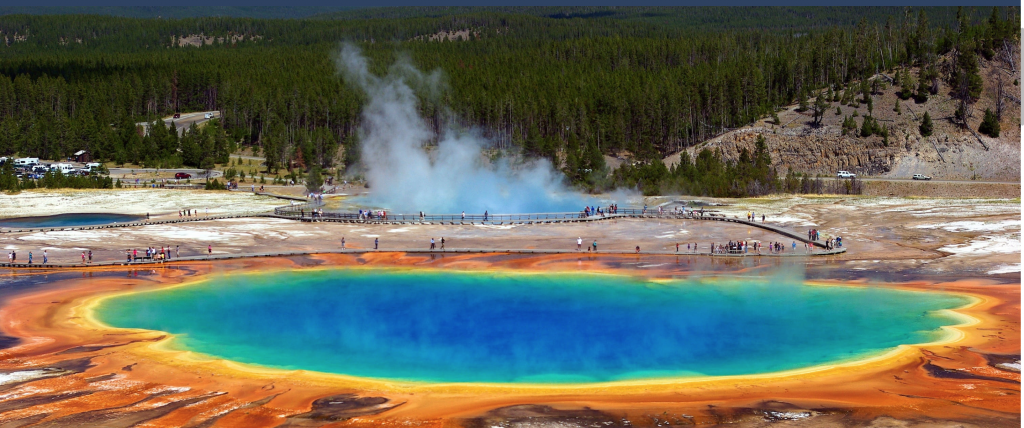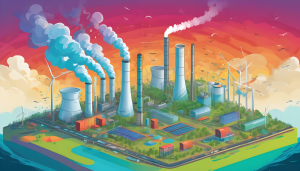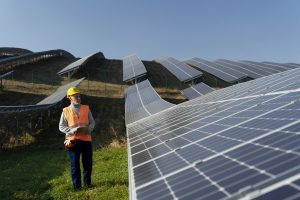Geothermal Energy: A Clean and Reliable Source of Power
Andrea Romagnoli October 20, 2023 0
Geothermal energy
Table of Contents
ToggleWhat is Geothermal energy?
Geothermal energy—literally “heat from the Earth”—may be hard to see, but thanks to increasing public interest and outreach, it is no longer hidden.
While geothermal power plants have delivered renewable power for more than 100 years, recent research and advancements have shown that geothermal is more than a 24/7 clean power source.
“Geothermal is a triple resource: an energy source for heating, cooling, and power; a storage resource; and a mineral resource,” said Amanda Kolker, geothermal laboratory program manager at the National Renewable Energy Laboratory (NREL).
“The Earth itself has the potential to address a variety of hurdles in the transition to a clean energy future.”
With the ability to provide electricity, heating, cooling, and storage—plus the potential to access critical minerals, capture and sequester carbon, produce green hydrogen, and more—the natural heat of the Earth is a powerhouse ready to be tapped. And investors and leaders across both the public and private sectors are moving full steam ahead with geothermal.
Understanding Geothermal Energy
Geothermal energy is derived from the heat stored within the Earth. This heat originates from a combination of factors, including the Earth’s formation, radioactive decay of minerals, and the ongoing heat flow from the Earth’s core.

How does geothermal energy work?
Geothermal energy can be harnessed in various ways:
Direct use: In this approach, geothermal hot water is used for heating buildings, growing plants in greenhouses, and even for Spas and bathing.
Electricity generation: Geothermal power plants generate electricity by using the Earth’s heat to produce steam, which drives turbines connected to generators.
Benefits of geothermal energy
Geothermal energy offers a number of advantages over other energy sources:
Low carbon emissions: Geothermal power plants produce minimal greenhouse gas emissions, making them an environmentally friendly alternative to fossil fuels.
Small land footprint: Geothermal power plants occupy relatively small areas compared to some other renewable energy installations.
Baseload power: Geothermal power provides a constant and reliable source of energy, reducing the need for backup power sources.
Sustainability: Geothermal energy is a sustainable source of energy that can be used for generations to come.

Types of geothermal system
Hydrothermal systems:
These systems utilize naturally occurring, underground reservoirs of hot water and steam. The hot water and steam are brought to the surface through wells, where they can be used directly for heating and cooling purposes, or to generate electricity. Hydrothermal systems are the most common type of geothermal energy system in use today.
Enhanced geothermal systems (EGS): EGS involve creating artificial reservoirs by injecting water into hot rock formations deep within the Earth. The injected water is heated by the hot rock, and then circulated back to the surface where it can be used to generate electricity. EGS are a promising technology for areas where hydrothermal resources are not available.
Direct use applications: This type involves utilizing geothermal hot water directly for heating and cooling purposes. Geothermal hot water can be used to heat buildings, greenhouses, and industrial processes. Direct use applications are a cost-effective way to utilize geothermal energy, and they can be used in a wide variety of settings.
In addition to these three primary types of geothermal energy systems, there are a number of emerging technologies that are being developed. These technologies include:
Closed-loop geothermal systems: These systems use a circulating fluid to transfer heat from the hot rock to the surface. The circulating fluid is never in contact with the hot rock, which reduces the risk of environmental impacts.
Supercritical geothermal systems: These systems utilize geothermal resources that are above the critical point of water. Supercritical geothermal resources have the potential to produce more energy than conventional hydrothermal resources.
Geothermal heat pumps: These systems use the Earth’s constant temperature to heat and cool buildings. Geothermal heat pumps are a cost-effective way to reduce energy consumption in buildings.
How does geothermal power plants work?
Geothermal power plants operate based on a straightforward process:
Production wells: Wells are drilled to access the geothermal reservoir’s hot water and steam.
Steam production: The hot water and steam are brought to the surface through the production wells.
Turbine operation: The steam drives turbines connected to generators, producing electricity.
Injection wells: After energy extraction, the cooled water is re-injected into the reservoir to maintain pressure and sustainability.
Challenges of geothermal energy
Despite its numerous benefits, geothermal energy faces certain challenges:
Location dependency: Geothermal resources are location-specific, which means not all regions have access to this energy source.
Initial investment: High upfront costs associated with drilling wells and establishing power plants can be a barrier to entry.
Resource depletion: Over-extraction can deplete geothermal reservoirs if not managed sustainably.
Emerging Geothermal Technologies
One emerging technology, enhanced geothermal systems (EGS), can bring the missing pieces (water or pathways through the rock), allowing for geothermal power generation in areas where it was previously unavailable.
“The U.S. Department of Energy is putting a great deal of investment into EGS with the recent Enhanced Geothermal Shot as part of the Energy Earthshot initiatives, funding for new EGS demonstration sites, and the current Utah FORGE demonstration site,” said Koenraad Beckers, an NREL thermal sciences researcher.
NREL participated in the EGS Collab Project, which ran experiments one mile underground at the Sanford Underground Research Facility, a former gold mine in South Dakota. EGS Collab provides a stepping-stone between laboratory tests and full-scale EGS deployment through cooperation between nine U.S. Department of Energy national laboratories, seven universities, and two industry members.
Closed-loop geothermal, also known as advanced geothermal systems, are another emerging technology for areas where traditional hydrothermal is not present. With these systems, water or another heat transfer fluid flows through pipe systems engineered for the specific area instead of through the subterranean rocks.
The Future of Geothermal Energy
The future of geothermal energy appears promising. Advancements in technology and increased recognition of its sustainability are driving its growth. Governments, environmental organizations, and the private sector are investing in geothermal projects to harness this clean and reliable source of power.
Geothermal energy offers a sustainable and consistent source of power, with minimal environmental impact and potential for innovation. As the world shifts towards greener energy solutions, the untapped potential of geothermal resources is gaining prominence. With ongoing research and increased investment, geothermal energy is positioned to play a vital role in a sustainable and eco-friendly future.





